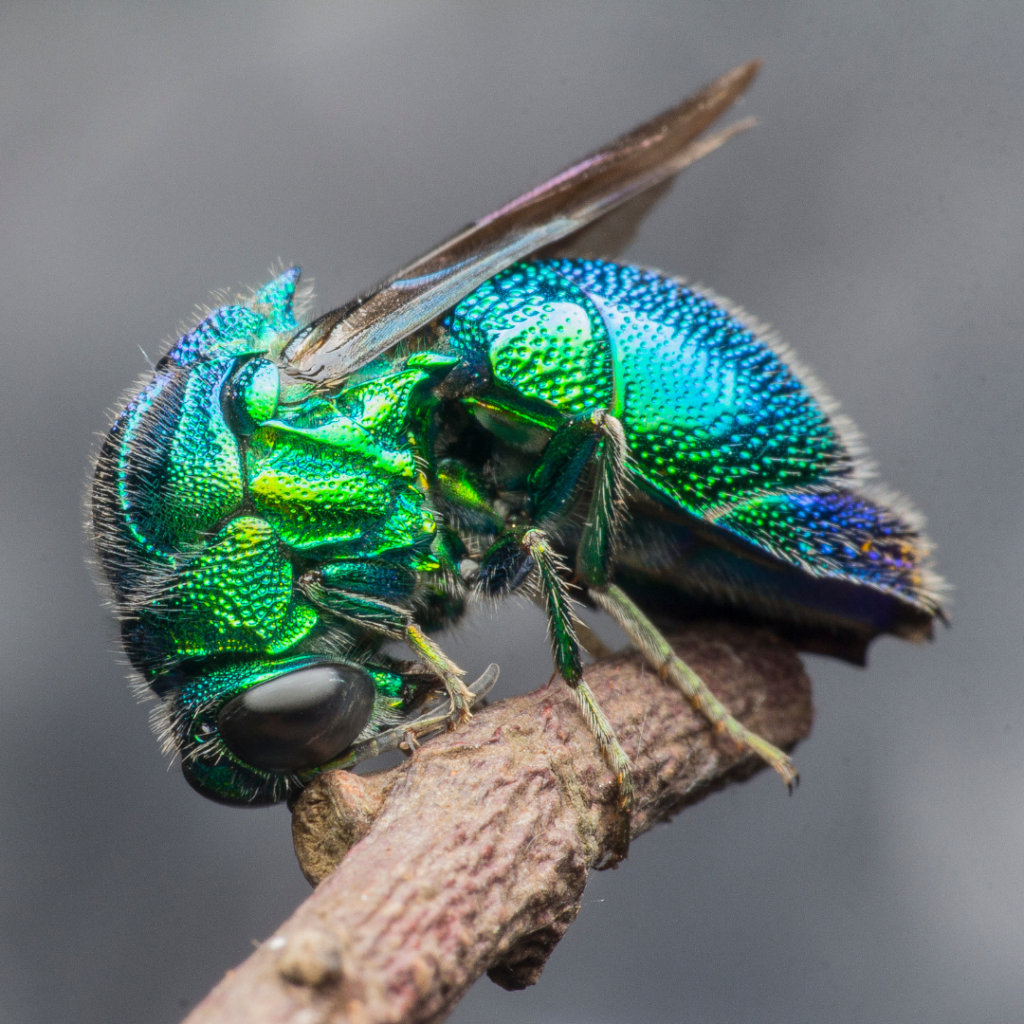Cuckoo wasps, or Chrysididae, are a fascinating family of parasitic wasps known for their brilliant metallic colors. According to Britannica, all cuckoo wasps are solitary (non-social) parasites whose intriguing name stems from their peculiar reproductive strategy, which is similar to that of the cuckoo bird.
Cuckoo Bird Inspiration:
The name “cuckoo wasp” is a nod to the cuckoo bird. Even though they are not biologically related, their behaviors are strangely similar. In particular, cuckoo birds are notorious for laying their eggs in the nests of other bird species, often removing a host bird’s eggs and replacing them with their own. The host bird then unwittingly raises the cuckoo’s offspring as its own.
Parasitic Behavior:
Cuckoo wasps are nest parasites. They do not build their own nests like other wasps. Instead, when the female cuckoo wasps are ready to reproduce, they lay their eggs in the nests of other solitary wasps and bees. Instead of building their own nests and caring for their young, they enlist the services of unwitting solitary wasps and bees. This behavior is akin to the cuckoo bird’s habit of laying its eggs in the nests of other bird species.
The Process:
Solitary wasp and bee nests can be found in areas such as burrows in the ground or cavities in hollow wood plant stems. When the cuckoo wasp locates its host, it watchfully waits for the host to leave its nest. Then, when an opportune moment presents itself, the cuckoo wasp surreptitiously enters the nest and lays her eggs. She quickly nestles her eggs between the wasp’s eggs. Occasionally, the host eggs are destroyed in the process.
Once the cuckoo wasp larvae hatch, they are raised alongside the host’s offspring. This behavior is similar to how a cuckoo bird places its eggs in another bird’s nest. Surrogate parents then raise their young.
Role in Nature:
Despite their parasitic nature, cuckoo wasps do play an essential role in ecosystems. They are pollinators. They feed on nectar as they travel from flower to flower. Furthermore, their presence is a reminder of nature’s recurrent juxtaposition.
